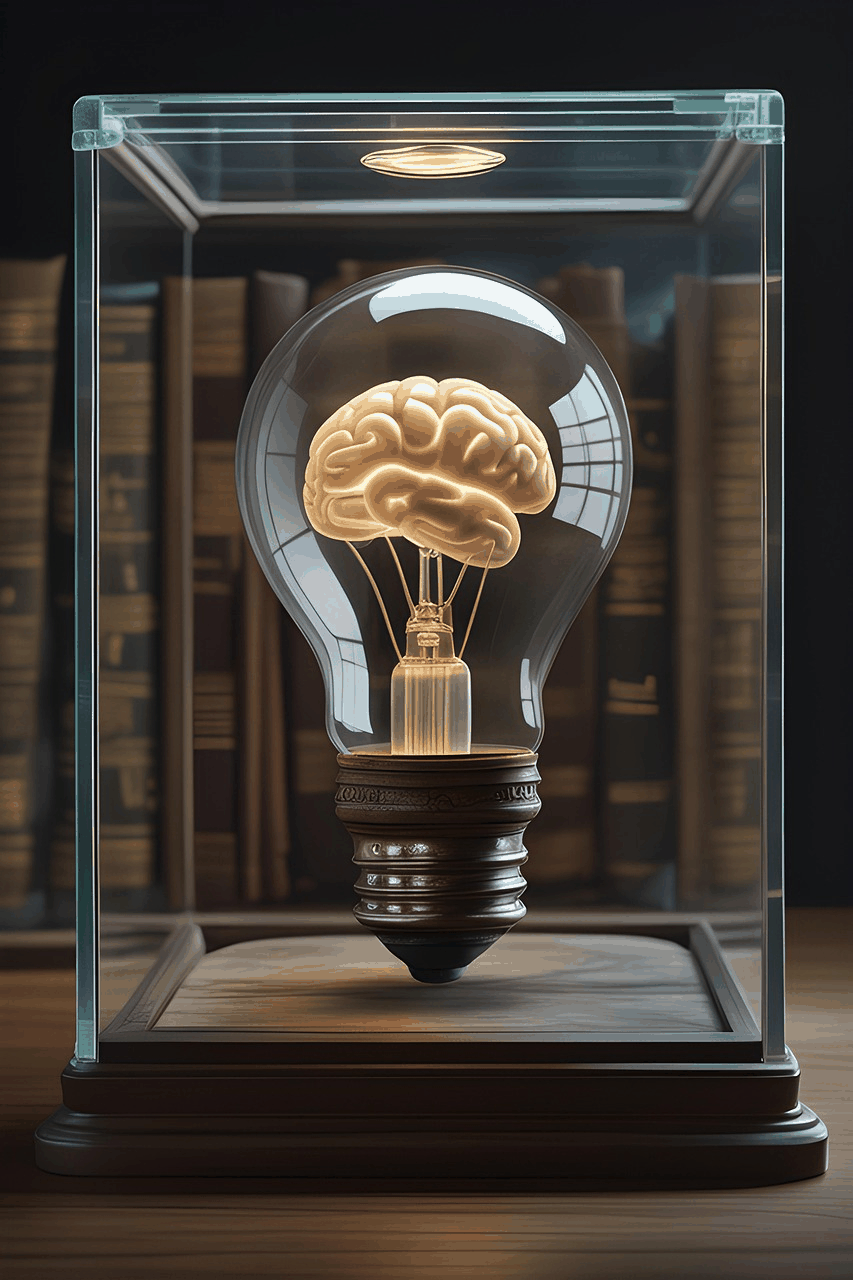We’re All Just Trying to Make Sense of It
There’s this word that gets thrown around a lot: “free thinking.” You hear it a lot in conspiracy circles, like it’s proof that the person saying it has broken free from the herd. But what I’ve noticed is that sometimes, “free thinking” becomes just another form of indoctrination. You reject one belief system only to get wrapped up in another.
Some folks trade mainstream narratives for fringe ones—whether it’s the idea that airplanes are secretly geoengineering the skies, or that the Earth is flat, or that the moon landings were faked. But to believe those things, you often have to ignore—or outright dismiss—mountains of physical, historical, and scientific evidence. That’s not skepticism. That’s just paranoia in a new outfit.
Real critical thinking? It’s not just about disagreeing with the mainstream, and it’s definitely not about agreeing blindly with the fringe. It means questioning everything—including the stuff that makes you feel smart, rebellious, or in control. It means being willing to say, “I don’t know yet,” and sitting with the discomfort of uncertainty.
Conspiracy communities often use the same tools as the systems they claim to oppose: repetition of ideas without evidence, emotional manipulation, an “us vs. them” mindset, and mistrust of institutions without offering anything concrete in return. It’s all indoctrination—just with a different preacher at a different pulpit.
Education Isn’t Indoctrination—It’s the Human Archive
That’s something I think gets lost in all this. Education isn’t the enemy. It’s not about brainwashing. It’s humanity’s archive. It says, “Here’s what we’ve figured out so far.” It’s up to each of us to decide what to do with that information, but we at least need access to it.
And let’s be honest—there’s too much of it. We’ve created more music than anyone can hear in a lifetime, more games than we can ever play, more movies and shows than we can watch. Same goes for knowledge. There’s just… too much. So we simplify. We look for patterns. And sometimes, we blame something bigger—governments, gods, aliens—because it’s easier than accepting that the universe is chaotic and complicated and mostly out of our control.
That’s where conspiracy theories come in. They offer comfort. They give you:
- A simple explanation for complex problems
- A sense of belonging to a group of “those who know”
- A boost to self-esteem—“I’m awake; the rest are sheep”
It’s not just about believing something different. It’s about finding identity and safety in those beliefs.
Language Is Slippery
A lot of this also comes down to language. Words carry different meanings depending on where you’re from, how you were raised, and even what mood you’re in. “Want to go to the beach?” means something very different in California than it does in Maine. Same words—completely different vibe.
Back in the ’70s, kids where I lived used to say, “I’ll kill you,” and it was just a joking, tongue-in-cheek way of saying, “Hey, I don’t like that.” These days? That same phrase could get you suspended.
This is what people who study language call pragmatics, sociolinguistics, or even semiotics. It’s the idea that meaning isn’t just in the words—it’s in the context. And a lot of arguments aren’t really about ideas; they’re about miscommunication. We’re all speaking slightly different dialects, even if we’re using the same language.
So when someone says “I believe in UFOs,” what they mean might be completely different from what the other person hears. One might mean, “I think there’s life out there.” The other hears, “I think the government is hiding aliens under the Pentagon.” And suddenly it’s a fight over a misunderstanding.
Urgency, Panic, and Personality
Another piece of this puzzle is urgency. Two people can believe the exact same conspiracy theory—but one shrugs it off, while the other freaks the hell out. What’s that about?
A lot of it comes down to personality. Folks with high anxiety, high openness to experience, or low agreeableness are more likely to be emotionally reactive to uncertain or threatening information. If you’ve lived through trauma or grew up feeling unsafe, you might be primed to see danger everywhere.
Add in social media—where everything is framed as an emergency—and it becomes almost impossible to stay grounded. Every headline screams, “They don’t want you to know this!” And your nervous system goes into survival mode before you’ve even finished reading.
For some people, the urgency becomes part of their identity: I’m the one who knows the truth. I’m on the front lines. I’m awake. Without that adrenaline rush, they might feel invisible.
But then there are folks who take a different path. They breathe. They ask questions. They step back and look at the big picture. They understand that just because something feels urgent doesn’t mean it’s true.
Imagination vs. Critical Thinking
And look—imagination is great. It’s how we get science fiction, art, creativity, innovation, and curiosity. It’s what allows us to dream beyond the limits of what we can currently prove or touch. Imagination is the birthplace of every idea we’ve ever had—from the theory of gravity to the idea of democracy to the concept of gods and galaxies. It’s powerful, and it’s necessary.
But here’s the thing: imagination without grounding isn’t wisdom—it’s just noise. When people start calling imagination “truth” just because it’s dramatic, countercultural, or emotionally satisfying, that’s where things get dangerous. Untethered imagination can lead to delusion, denial of reality, and the rejection of knowledge in favor of ego or escapism.
That’s why critical thinking is the compass.
Critical thinking helps us navigate the sea of ideas, stories, media, and opinions we’re constantly floating in. It doesn’t shut down imagination—it guides it, shapes it, and helps us separate the beautiful possibilities from the harmful fabrications. It gives us a framework to evaluate:
- Is this idea supported by evidence?
- Where did the idea come from?
- Where did the evidence come from?
- What’s the motive behind it?
- Does it hold up when challenged?
It’s the process that helps our brains parse the flood of information we take in every day—what to remember, what to discard, what to question, and what to file away for later. Without it, we’re just absorbing everything indiscriminately, which is how people end up believing that the Earth is flat because someone made a compelling video about it.
Imagination is the fire. Critical thinking is the hearth that contains it, keeps it burning safely, and directs its heat toward something useful.
And in a world where ideas can go viral in minutes and deepfakes can make anything look real, we need that compass more than ever. Not to kill imagination, but to protect it from becoming unmoored and mistaken for truth just because it’s loud, confident, or different.
Because real thinking—real free thinking—isn’t about rejecting the mainstream or accepting the fringe. It’s about developing the tools to discern, to evaluate, and to stay curious without getting lost.

Belief at the Core
At the heart of all this is belief. And belief is tricky.
When someone challenges what we believe, it can feel like more than a disagreement—it can feel like a personal attack. Not because the idea itself is sacred, but because belief is tangled up with identity. We don’t just have beliefs—we often are our beliefs. They tell us who we are, where we belong, what matters, and how to make sense of the world.
That’s why when someone says, “I don’t believe in that,” we can feel invalidated, dismissed, even threatened. It cuts deeper than facts. It hits the story we tell ourselves about our place in the world.
But here’s where it gets even more complex: even when we use the same words, we often mean completely different things.
Take the word “freedom.”
Two people might both say, “I believe in freedom,” but…
- One means: “I should be free to say or do anything—even if it’s violent, hateful, or harmful.”
- The other means: “I should be free to live without fear of violence, hate, or harm.”
Both claim the same principle. But one sees freedom as the right to destroy; the other sees it as the right to heal.
Or consider:
- “I have the right to speak my truth.”
– But does that mean, “I can speak what’s true as I understand it, with care and courage,”
– Or does it mean, “I can spread lies or harmful rhetoric and call it freedom”?
We say things like, “I believe in justice,” or “I believe in God,” or *“I believe in science.” But what we’re really saying is shaped by our experiences, our culture, our upbringing, our trauma, our hopes.
And yet, we often assume that when someone uses the same word we do, they must mean the same thing we mean. That’s where misunderstandings take root—and sometimes grow into conflict, division, or even violence.
So how can we ever truly know if we believe the same thing?
Maybe that’s the point—we don’t need to believe the exact same thing.
Maybe we just need to recognize that belief is deeply personal, and that different people mean different things, even when the language sounds familiar.
Maybe the real wisdom is in letting go of the need for total agreement, and instead practicing the kind of curiosity and compassion that says:
“Tell me more about what you mean by that.”
“Where did that belief come from for you?”
“How does that belief serve you? Or hurt you?”
Because if belief is tied to identity, then challenging belief without care is like walking into someone’s home and breaking their furniture. But asking someone about their beliefs with respect? That’s like being invited in for tea. It doesn’t mean you have to stay forever, or agree with the décor. But it opens the door to something real.
And maybe that’s enough.
So What Can We Do?
After talking through all of this—belief, language, emotion, identity, misinformation—the only advice I really have is simple:
Go easy on each other.
Seriously. Our brains are soft and squishy.
We’re all overloaded, overstimulated, and trying to make sense of a world that moves too fast, speaks too loud, and throws more information at us than any one person can ever fully process. And sometimes, when someone says something that sounds totally unhinged, it’s not because they’re evil or broken—it might just be that their brain was extra squishy that day. Haven’t we all had days like that?
So yeah: go easy. Be kind. Ask better questions.
Try listening before correcting. Try curiosity before judgment. Because underneath all the wild ideas and clashing beliefs, we’re all just people trying to find something that makes sense. And none of us really know what’s going on—not fully. And that’s okay.
Here’s the part that helps me sleep at night:
Everything we’re facing is human-sized.
It might feel massive. Chaotic. Unmanageable.
But when you strip away the noise, the drama, the algorithms and headlines—everything we’re experiencing is happening at the human level. That means it’s nothing we can’t understand, work with, grow through, or figure out. It’s not beyond us. It’s within us.
We don’t need to believe the world is spiraling out of control or that truth is forever out of reach. We don’t need to panic or retreat or lash out. We’re human. And that means we can handle it.
We can ask better questions.
We can repair broken connections.
We can sit with complexity without needing instant answers.
We can face the mess of modern life head-on—with courage, humility, and humor.
Because that’s what we do.
We adapt. We invent. We create. We evolve.
We screw things up and we learn from it.
We overthink and still move forward.
We carry each other when it gets heavy.
So no, we don’t have to be afraid of the chaos.
We don’t have to be overwhelmed by the noise.
We’re built for this. Not because we’re perfect—but because we’re human.
So yeah… let’s go easy on each other.
We’re all in this thing together, trying to figure it out—one wild, squishy-brained, deeply human thought at a time.


Leave a Reply